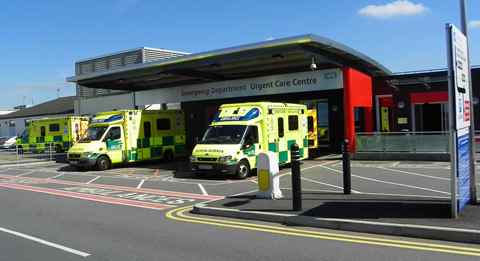
Leighton Hospital bosses are missing out on more than £2 million of funding after A&E demand soared to record-breaking levels over the past year, writes Stephen Topping.
Fresh figures released by Mid Cheshire Hospitals NHS Foundation Trust show Leighton Hospital has failed to meet the national four-hour waiting time target for A&E every month from September 2017 to August 2018.
As a result, it means the trust is losing out on £2.4 million that it was due to receive through the Provider Sustainability Fund – and it comes after the trust spent extra cash to help keep up with demand this summer.
There were 1,634 more attendances at Leighton’s A&E in June, July and August this year than last year – while July saw the trust’s highest number of emergency attendances ever recorded at 8,337.
Chris Oliver, chief operating officer at the trust, said: “A&Es across the country have seen an increase in attendances over the last year and Leighton Hospital is no exception.
“For our community, this is partly due to a growing and aging population with more complicated health needs.
“Typically, we would expect to see a reduction in the number of patients [with urgent or life-threatening emergencies] who are streamed to our resus or majors areas over summer months.
“This year, however, the figures have remained in line with winter months, which has put added pressure on trust services.
“This summer we also experienced extended periods of hot weather, which can increase the health risks to vulnerable patients.
“As a result, we saw an increase in related attendances such as dehydration.
“To help keep up with demand, we have opened additional beds and increased staffing.
“These carry a significant additional cost and so have contributed to increasing the trust’s deficit for 2018-19.”
At the same time that the trust is missing out on £2.4 million due to A&E delays, its deficit currently stands at £2.2 million – although it is forecast to make a surplus at the end of the financial year.
Hospital trusts are set a target of 95% for the number of times patients are seen to within four hours at A&E.
In August, 87.14% of attendances at Leighton met the standard – meaning there 967 occasions when patients were left waiting more than four hours.
Mr Oliver says delayed discharges – commonly known as ‘bed-blocking’ – are a key factor behind those figures, with around 50 patients often in beds at Leighton that should be elsewhere.
He said: “Many of the issues that affect the trust’s four-hour emergency care standard lie outside of the A&E department and relate to ensuring our patients are discharged back to their homes or into the community as soon as they are able to.
“The trust and its partners are one of the best performing in the country in this area, however the hospital does have on average 50 patients who are medically optimised and therefore who do not need to be in an acute inpatient bed, which puts pressure on patient flow from A&E to inpatient wards.
“The trust has been preparing for the upcoming winter for a number of months and part of this has included working with partners on additional support in the community, which will help to ease some of this pressure.
“Despite current demand, staff across the trust continue to work hard to ensure patient safety and that services run as smoothly as possible.
“The demand has, however, meant that some patients have had to wait longer than usual to be treated and we would like to apologise to those affected.
“The public can also support the trust by choosing the most appropriate service for them. This includes calling 111 if you need medical help fast but it’s not an emergency.”


















Recent Comments